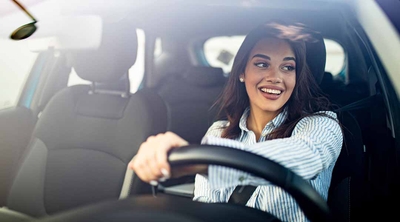Drunk driving prevention tips
3 min read
Despite decades of drinking and driving awareness programs, drunk driving is still a problem. According to the National Highway and Traffic Safety Administration (NHTSA), there are about 32 drunk-driving-related fatalities daily in the United States. The Governors Highway Safety Administration reports that in 2017 29% of all traffic fatalities involved a drunk driver. Drunk driving prevention is a national concern, and both states and individuals can help combat it.
What states do to prevent DUIs
DUI (short for driving under the influence), drunk driving, impaired driving, or driving while intoxicated (DWI) is the target of laws in all 50 states. All states use BAC or blood alcohol content, which refers to the percentage of alcohol in circulating blood. In nearly all states, a BAC of 0.08, meaning a blood alcohol content of 0.08%, is the legal threshold for a DUI. All states also define a zero-tolerance BAC limit between 0.0 and 0.02 for minors who cannot legally drink. Some states also define a higher limit (often 0.15 but sometimes higher) that carries increased penalties.
The consequences of a DUI conviction vary by state, from civil penalties (e.g., a ticket) to mandatory jail time for a first offense. Most states also impose an ignition interlock penalty on DUI offenders. The ignition interlock is a device that must be installed in any car the offender uses and prevents the car from starting until the driver passes a breath test confirming their sobriety. Although not a legal requirement, insurance rates almost always go up following a DUI, so a conviction can have long-lasting consequences on your cost to drive or even your ability to afford auto insurance. Learn more about auto insurance after a DUI.
How to stop others from drinking and driving
Drunk driving prevention is the most effective solution. If you suspect someone is preparing to drive drunk, don’t let them drive. Rideshare apps, calling a cab, or even public transportation are simple ways to get someone a safe ride. A BAC calculator can help give a rough idea of a person’s BAC, but reaction time is slowed for most people after even one drink, so it’s best to err on the side of caution when you are considering driving after drinking.
If you’re already on the road, you can still help with drunk driving prevention. Keep an eye out for impaired drivers. According to MADD, signs can include:
- Erratic behavior such as weaving and quick acceleration or deceleration
- Slow reactions to traffic signals
- Driving slower than normal
- Signaling that doesn’t match the driver’s behavior
If you see someone you believe might be driving drunk, note their license plate and a description of the car. Make a hands-free call or stop somewhere safe and call 911 to report the vehicle, providing the vehicle description and as much information as possible about its location and direction.
How to prevent drunk driving in your own life
Just as when dealing with others, prevention is best. If you know you will have a few drinks, designate a sober driver for the evening. If someone in your social group doesn’t want to do it, try asking them to pool resources for a designated driver service to pick you up or arrange to take public transportation. The same goes if you’re heading out on your own.
If you find yourself unexpectedly unsafe to drive, consider calling a rideshare service or taxi, taking public transportation, or even asking the bartender for help. Many bars have a list of available services on hand. Some bars will even let you leave your car in the parking lot until the morning. If you’re unsure whether you’re safe to drive, it’s better to assume you’re not than to take the risk. According to the NHTSA, even a very low BAC can impair driving.






